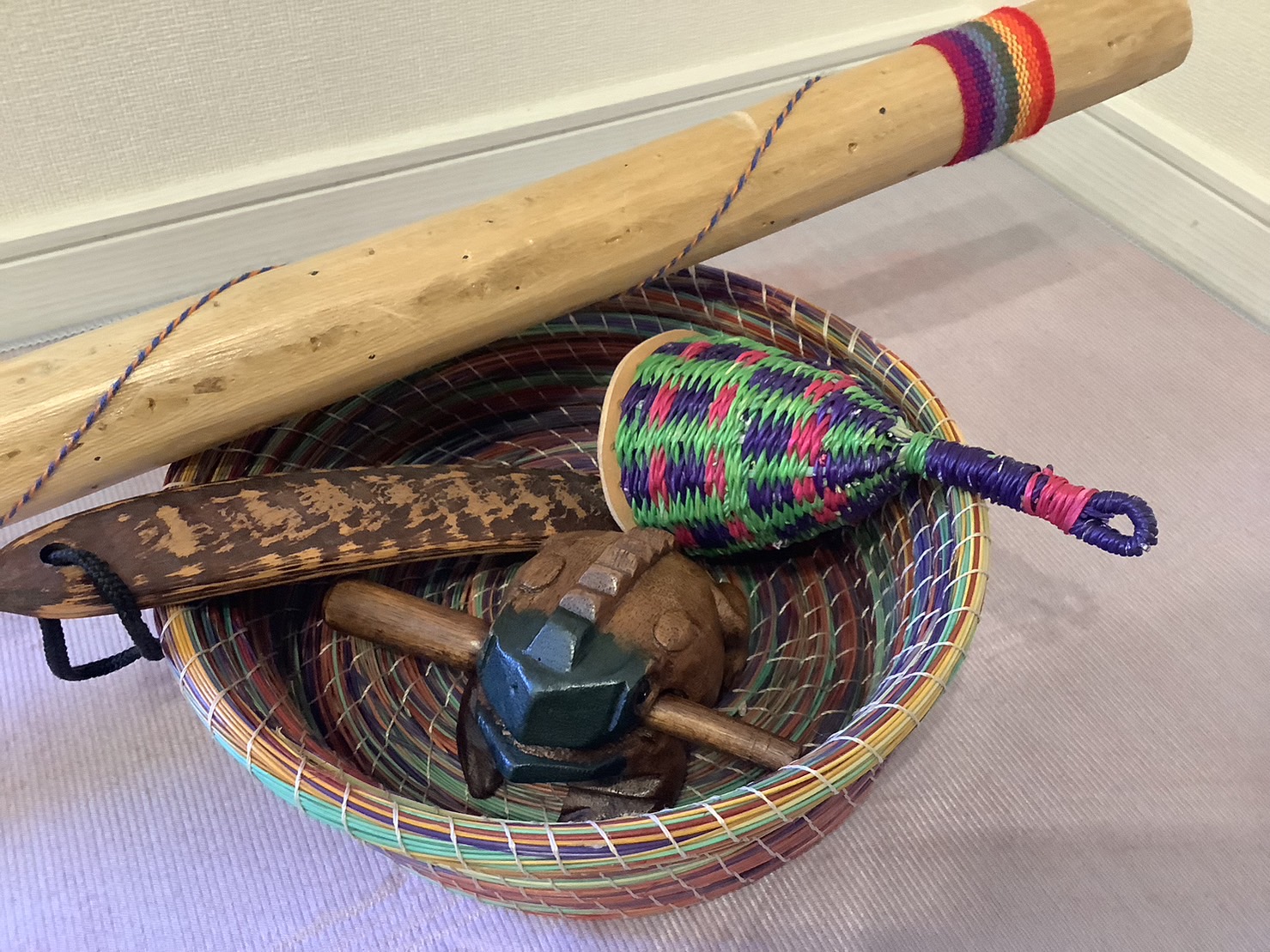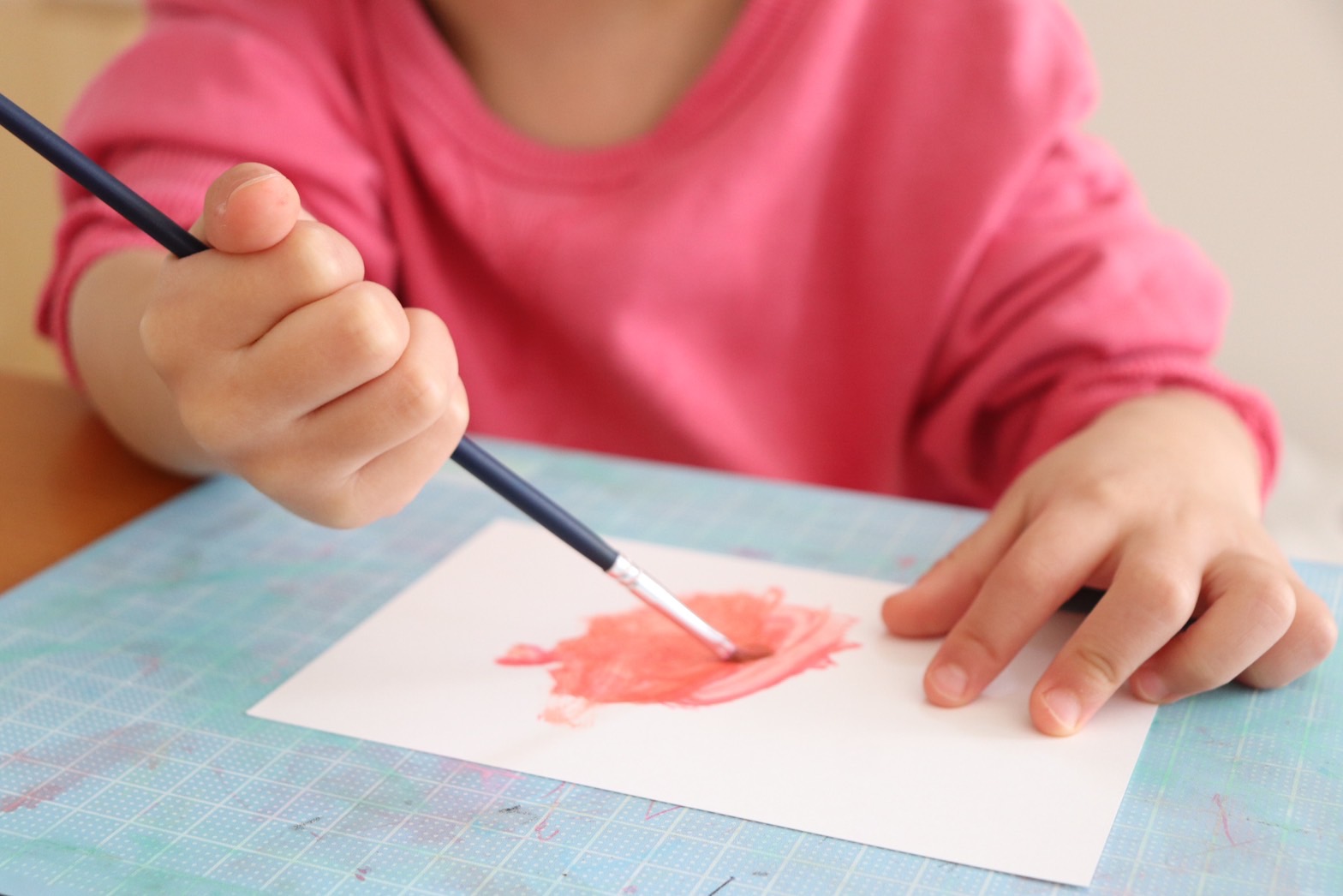私たちは子ども達に様々な音楽体験を提供したいと考えています。
- 歌や手遊びなどでたくさん歌う
子ども達が理解しやすい歌を一緒に楽しく歌ったり、知ってる歌を子ども達に歌ってもらいます
この時期、子どもは動きや言葉に大変興味があります。大人は言葉と動きをはっきりと見せ、言語の敏感期(※1)にある子どもが歌を吸収しやすいようにします。 - 様々な種類の音楽を聴きます
日本の現代音楽や伝統音楽、世界の様々な音楽、クラシックやジャズなど様々な音楽を聴いて楽しみます
- 日本や外国の様々な楽器に触れる
音楽のコーナーにはおもちゃでなく、世界の本物の楽器が置いてあります
ペルーの長~いレインスティックやガーナの豆のさやで作ったシェーカー、カエルの形のコロコロと鳴るベトナムのギロ、日本の和太鼓など沢山の楽器を一緒に楽しみます - 楽器の音と楽器の名前を一致させる
少し年長になると様々な楽器の音の違いを聴き分ける活動も出来ます
子ども達は絵を見ながらその楽器の音を聴き、音の感覚を研ぎ澄ませていくでしょう - ミニコンサート
日本の民芸音楽の活動をするスタッフやプロの方も含め、時にはミニコンサートを行い、様々な音楽を楽しむ予定です

アートでは以下のような活動をします。
- 常時用意されているもの
チョーク、絵の具、自由画(クレヨンなど)、粘土などの活動
- 短期のもの
野菜を切ったスタンプ、小さな道具で描く水彩画、お庭や公園で拾った自然の物を使った工作など
- 季節の行事に関するもの
様々な行事の工作コーナーを設け、クリスマスの飾りや七夕の短冊など子どもが選んで自由に作れるようにします

-
Singing fun and understandable songs and fingerplays together. We sing fun and understandable songs. At this stage, children are interested in movement and language. Guides show clear language and movements, making it easy for children in the language-sensitive period to absorb songs.
-
Listening to various types of music. Contemporary and traditional Japanese music, classical, jazz, music from around the world.
-
Playing various Japanese and foreign instruments such as long rain sticks from Peru, shakers made from bean pods in Ghana, rolling frog-shaped instruments, a Vietnamese giro, and Japanese taiko drums.
-
Identifying the instrument with its sound using pictures and CDs. Older Children listen to the sound of an instrument while looking at its picture. This enhances their sense of sound.
-
Various mini concerts. We plan to have mini-concerts, including performances by guides and professional musicians.

In art, we engage in things such as:
-
Chalk, paint, free drawing (crayons, etc.), clay
- Short-term activities:
stamping with cut vegetables, watercolor paintings using small tools, and crafts using natural materials collected from our garden and nearby parks
- Seasonal event-related activities:
For example, making decorations for Children’s day and making tanzaku paper for Tanabata Star Festival. We set up a crafts corner for children to freely create.

